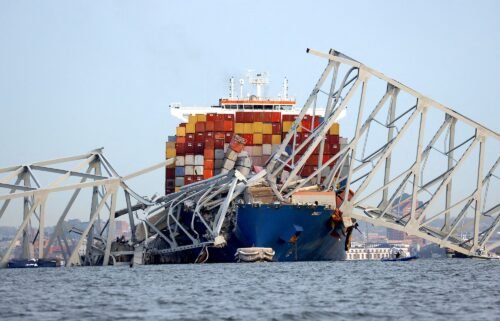As regional tensions rise, Japan’s ground troops hold their first military drills in decades
CNN
By Blake Essig
For the first time in almost 30 years, Japan’s Ground Self-Defense Force (GSDF) is conducting a massive nationwide military exercise to prepare troops for potential conflict.
Since mid-September, about 100,000 personnel, 20,000 vehicles and 120 aircraft have been participating in various exercises across the country focused on operational readiness.
In recent years, the Indo-Pacific regional has become a focal point of tension, with GSDF officials saying the security environment surrounding Japan is the worst it’s been since the end of World War II.
“This Ground Self-Defense Force exercise is truly focused on improving operational effectiveness, deterrence and response capabilities,” said Col. Noriko Yokota, GSDF spokesperson.
“Each unit is conducting the exercise with an eye to what is necessary to achieve this goal. They are preparing themselves so that they can respond with confidence when they are forced to take further action.”
Earlier this week, North Korea said it had successfully test-fired a new ballistic missile from a submarine that landed in the Sea of Japan, also known as the East Sea. Meanwhile, further south, China has been ramping up pressure on Taiwan by sending military jets into its Air Defense Identification Zone.
Without identifying any country by name, GSDF officials say regional powers are willing to change the status quo by force — and one country in particular continues to develop nuclear weapons, missiles and challenge the non-proliferation system.
“The current security environment surrounding Japan is extremely severe,” said Lt. Gen. Yuichi Togashi, Commanding General of the 2nd Division GSDF. “We, the Self-Defense Forces, are required to enhance the effectiveness of operations.”
Building a defensive force
Troops from the GSDF 2nd Division in Asahikawa, Hokkaido traveled about 2,000 kilometers (1,242 miles) to the Hijudai Manuvering Area in Japan’s Oita prefecture to perform defensive combat drills.
Since arriving in September, they’ve spent weeks building out logistic areas, command posts, battlefield positions and underground triage units. Some are built underground and all are covered in camouflage, making them difficult to identify.
GSDF officials say the drill isn’t taking place to prepare for potential conflict against in any specific region or against any particular country.
But the training environment at Hijudai Manuvering Area has similar terrain to what troops would experience if war broke out in Japan’s southern islands. That includes the Senkaku islands — an uninhabited rocky island chain in the East China Sea — administered by Tokyo but claimed by Beijing, where the islands are known as Diayou.
Tensions over the uninhabited rocky chain — 1,900 kilometers (1,200 miles) southwest of Tokyo but only a third of that distance from Shanghai — have simmered for years, and claims over them date back centuries.
Japanese Defense Minister Nobuo Kishi recently told CNN the islands are unquestionably Japanese territory and would be defended as such.
“(The) Senkaku islands are an inherent part of Japanese territory, both according to international law and looking historically,” Kishi said.
“There is no territorial dispute relating to the Senkaku islands between Japan and other countries. Against Chinese action to Senkaku islands and other parts of the East China Sea, we have to keep sending strong message.
“As Japan’s Defense Ministry and self-defense forces, we have to build up our own military capabilities as well as to respond to this situation.”
Troops training on southern islands
In a marked departure from Japan’s post-World War II pacifism, the combat training portion of the drill at the Hijudai Manuvering Area includes unscripted simulated war games.
The GSDF 2nd Division was broken up into two teams to simulate invaders and defenders with the aim of taking out rival combatants and practicing first aid.
Instead of live ammunition, troops on the ground are armed with simulation weapons that fire lasers. The troops’ uniforms, tanks and other vehicles are all lined with sensors that notify them if they’ve been killed or injured by the enemy.
In the simulated combat drill, if someone is hit, troops on the battlefield apply first aid in the field before taking the individual to a triage unit. Depending on the severity of the simulated injury, injured troops are treated and return to the battlefield or are medevacked to hospital to receive more specialized care.
Other troops are being deployed for drills on Japan’s southern islands — Miyako Island, Amami Oshima, and Yonaguni Island, with the latter just 234 kilometers (145 miles) from Taiwan.
“The deployment of troops in the southwest region is a major concept of the Ground Self-Defense Force,” Yokota said. “We believe that it is important for the SDF to deploy troops wherever they are needed.”
For Japan, these war games have never been more important.
“We are now aware that the security environment surrounding Japan is unprecedentedly severe,” Yakota said.
“In this context, we, the Self-Defense Forces, are preparing for all kinds of contingencies, considering that we have to respond to all kinds of situations.”
Since Japan’s GSDF was established in 1954, the force has never been involved in actual conflict — meaning drills like this are the closest members have ever come to fighting a war. The drills end in mid-November.
The-CNN-Wire
™ & © 2021 Cable News Network, Inc., a WarnerMedia Company. All rights reserved.


